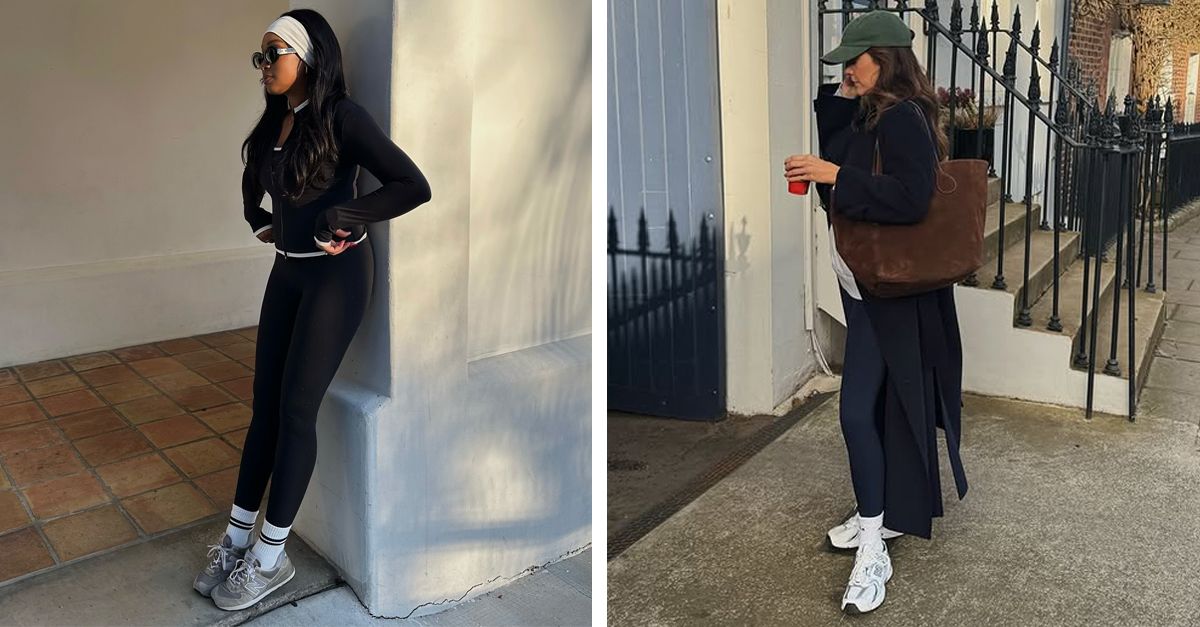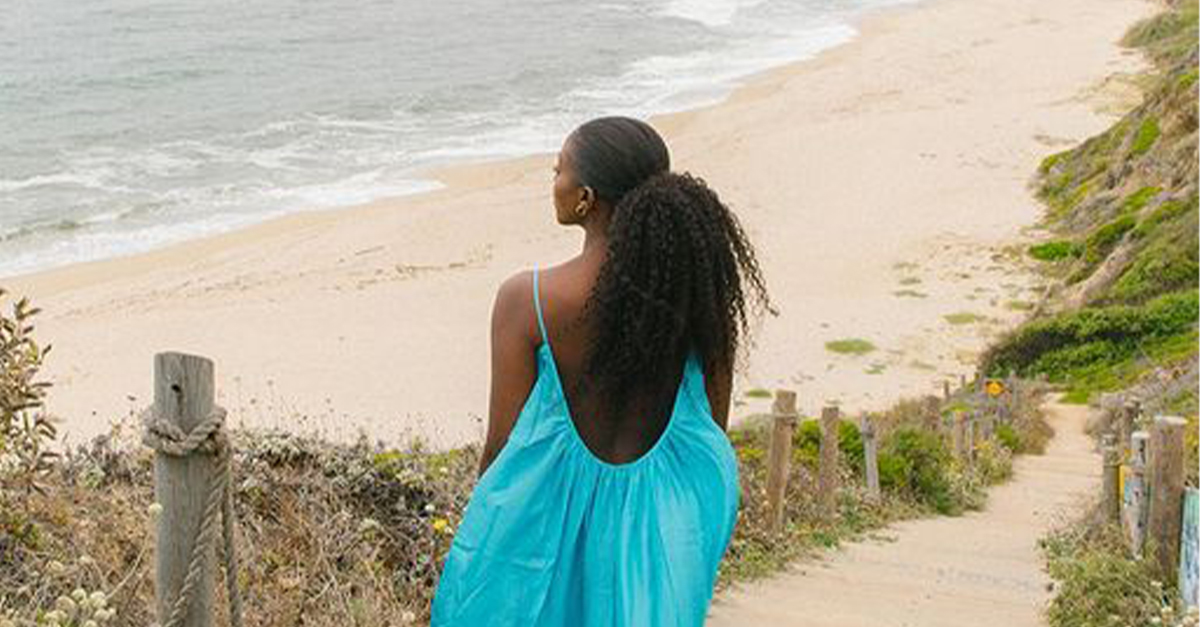To tell the story of Beyoncé‘s albums over the 20 years of her solo career is almost to tell the story of the pop album format in the 20th century.
When she dropped her first album in 2003, it was mostly designed for maximum top 40 consumption, with the singles immediately discernible from the deep cuts. Those lines started blurring over the course of the ’00s, with more album cuts getting music videos, and more over-arching concepts dictating track lists and rollouts. By the ’10s, she was officially getting more attention for her increasingly autobiographical full-length albums than her pop hits, with deep cuts and even bonus tracks often garnering more fan affection than her official singles.
And then in the mid-’10s, she nearly did away with singles entirely, dropping her albums unexpectedly and all at once as complete statements, exponentially more powerful in full than excerpted. And as Beyoncé went, 21st century pop music followed — not just sonically, but strategically and thematically, getting more conceptual, more personal, more inextricable with its visual accompaniments, more willing to roll the dice on surprise releases.
It’s an influence and importance that hasn’t always been reflected in her sales numbers: Unlike pop star peers over the years like Usher, Adele and Taylor Swift, none of her albums has ever been certified Diamond by the Recording Industry Association of America (RIAA, with diamond reflecting 10 million equivalent album units shipped in the U.S.), or moved a million units in their first week of release (according to Luminate, whose data powers Billboard‘s charts). Still, a great deal of context is needed to understand her sales numbers, particularly those first-week numbers — due to the circumstances behind their releases, the perception of pop acts at the time, and sometimes the limits that Bey’s own innovations put on her commercial ceiling.
Before her upcoming Renaissance begins its own first week this Friday (July 29), let’s take a look back at the first weeks for her six official albums to date — noting, of course, that pure album sales were the sole measurement utilized by the weekly Billboard 200 albums chart through the list dated Dec. 6, 2014, after which that chart switched to a methodology that blends album sales with track equivalent album units and streaming equivalent album units.
(For the purposes of this exercise, we’re also not counting her three other LP releases over the last six years — her 2018 The Carters team-up with superstar husband Jay-Z Everything Is Love, 2019 Coachella chronicle Homecoming: The Live Album or 2019 curated film soundtrack The Lion King: The Gift — but for the record, their first weeks were 123,000, 38,000 (in a two-day week) and 54,000, respectively.)
Dangerously in Love (2003)
First Week: 317,000 (album sales)
In the post-Napster, pre-streaming, early-iTunes Store era, Beyoncé made a solid bow with her debut set. The 317,000 first-week number for Dangerously was less than half the 663,000 number posted by Destiny’s Child most recent set, Survivor — released in 2001, when the bite filesharing had taken out of the blockbuster pop market wasn’t quite as large as it would soon grow — but Destiny’s Child had a much greater track record than their solo frontwoman at that point, with Bey’s first solo single release (2002’s “Work It Out,” from Austin Powers in Goldmember) stiffing commercially, failing to hit the Billboard Hot 100.
Bey was able to bounce back from that disappointment in time for Dangerously‘s release, however — first with “03 Bonnie & Clyde,” her first collab with future husband Jay-Z and a top five Hot 100 hit in late 2002, and then with Dangerously lead single “Crazy in Love,” which had already bounded into the chart’s top 10 by the time the album dropped that June, hitting No. 1 the same week the LP debuted atop the Billboard 200. It resulted in a sales week large enough to top the Billboard 200, albeit one that only put her at about the middle of the pack for chart-topping albums in 2003; the number was eclipsed the very next week by R&B star Ashanti for her the debut frame of her sophomore release Chapter II (326,000), and then again the next month by the Bad Boys II soundtrack (324,000) and Alan Jackson’s Greatest Hits Volume II and Some Other Stuff (328,000).
However, Dangerously in Love would remain a pop fixture, spawning four top five hits on the Hot 100 and remaining on the Billboard 200 for 102 weeks. Today, it stands as her best-selling album to date, with over 5 million in pure U.S. album sales.
B’Day (2006)
First Week: 541,000 (album sales)
By the time of her sophomore album B’Day, Beyoncé’s solo superstar status was unquestioned, as she’d scored a pair of Dangerously Hot 100-toppers in “Crazy in Love” and Sean Paul-featuring follow-up “Baby Boy,” and then a third in early 2006 from the Pink Panther soundtrack alongside Bun B and Slim Thug with “Check on It.” The lead single from then-upcoming sophomore album B’Day, “Déjà Vu,” attempted to recreate the “Crazy” formula in June 2006, with another classic pop-soul groove and a guest verse from paramour Jay-Z, but it achieved more modest success, peaking at No. 4 on the Hot 100.
Despite the less-explosive lead single — and a sales period that had been further depressed by filesharing and song downloads (“At the end of the day, pop music is a singles driven business, so why would I want to buy a whole album?” Billboard senior correspondent Brian Garrity said to the AP for a year-end wrap-up) — Bey’s sophomore album B’Day bowed with a robust 541,000 first-week sales that September, a 71% increase from Dangerously. This was the biggest first week for any album since The Chicks’ 526,000 debut frame for post-country-fallout comeback set Taking the Long Way over three months earlier, confirming that Beyoncé was now among pop’s commercial elite — though it was handily outpaced a week later by fellow gone-solo superstar Justin Timberlake’s new FutureSex/LoveSounds, which sold 684,000 in its first week. (Bonus: In 2007, Timberlake released a deluxe edition of the album which featured Bey herself on its deluxe edition).
I Am… Sasha Fierce (2008)
First Week: 482,000 (album sales)
By the time of her third album I Am… Sasha Fierce, her first double album, Beyoncé had scored a fourth solo No. 1 with B’Day mid-tempo breakup classic “Irreplaceable,” starred in the hit movie adaptation of the Dreamgirls musical, and undergone her first world tour with the highly successful The Beyoncé Experience trek. In October 2008, two songs were released in advance of her new set: “If I Were a Boy” and “Single Ladies (Put a Ring on It),” with the former (a ballad bemoaning gender double standards) given the more immediate promotional push, quickly reaching and peaking at No. 3 on the Billboard Hot 100 — though “Single Ladies” would, of course, prove the much bigger hit, topping the chart that December.
Before that, however, I Am… Sasha Fierce bowed that November with 482,000 in first-week sales. The slight dip (11%) from B’Day might have been attributable to album sales continuing to slide throughout the 2000s, dropping another 14% across the board in 2008, as digital song sales continued to take up more and more of the market. The total was above average for a 2008 No. 1 album, though in a crowded season of pre-holiday releases, its first week was outpaced by releases by Britney Spears (Circus, 505,000), Taylor Swift (Fearless, 592,000) and AC/DC (Black Ice, 784,000).
Despite selling fewer copies on the whole than her first two albums, huge digital song sales and streams for singles like “Single Ladies” (5.8 million sold in the U.S.) and the pop ballad perennial “Halo” (925 million U.S. on-demand official streams, according to Luminate) have helped I Am… Sasha Fierce become Beyoncé’s best-performing album to date in terms of total equivalent album units moved (8.19 million).
4 (2011)
First Week: 310,000 (album sales)
Beyoncé’s lowest-performing album in terms of total album sales also delivered her smallest first week. Though 4 arrived on the back of I Am… Sasha Fierce‘s huge success and has gone on to be one of her most fan-beloved works, the set simply failed to generate a hit single on the level of even slightly underwhelming past lead singles like “Deja Vu” or “If I Were a Boy.” Up-tempo lead single “Run the World (Girls),” released in April 2011, drew mixed reviews and peaked at No. 29 on the Hot 100; ballad follow-up “Best Thing I Never Had” (also released before 4 that June) followed in the sonic footsteps of “Irreplaceable,” but perhaps a little too closely, as the song topped out at No. 16. (Later singles “Love on Top” and “Countdown” would draw some of her strongest reviews to date, but also only found limited chart success by her standards, peaking at No. 20 and No. 71, respectively.)
4‘s first-week performance of 310,000 was down 36% from I Am… Sasha Fierce, which, combined with her lack of single success, suggested that perhaps she was having a hard time fitting into a new radio landscape dominated by the turbo-pop of Katy Perry, Kesha, Rihanna, and Bey’s “Telephone” collaborator Lady Gaga. However, it should be noted that — outside of Gaga, who broke seven digits with the first week of her 2011 set Born This Way (helped greatly by 99-cent sale pricing from Amazon) — her first week was significantly larger than those of the then-most recent blockbusters from those superstars, including Perry’s Teenage Dream (192,000) and Rihanna’s Loud (207,000), which spawned a combined eight Hot 100 No. 1s between them. It was an era when, with a few notable exceptions, pop commercial success was defined more by digital song downloads than full album sales, with iTunes at its peak and CD sales sliding closer and closer to irrelevance.
Beyoncé (2013)
First Week: 617,000* (album sales)
In what likely stands as the shrewdest move of Beyoncé’s career — perhaps of any pop star this whole century — she took her lumps from 4‘s underperformance, and rather than deciding to chase after the single success of Katy Perry and Kesha, she flipped the script entirely and made her new self-titled album the main event of late-2013 pop. And of course, she did that by releasing the entire thing at once in the wee small hours of a Friday morning in December — initially available for sale only as a digital download, exclusively in the iTunes Store — totally without warning, totally without advance singles and with a full music video album to go along with it. It was a shocking, unprecedented release for a pop artist on her level, and it captured the world’s attention like none of her other albums had previously. (It also helped that the album was one of her best, drawing what were then easily her strongest critical notices to date.)
In fact, as impressive as the 617,000 first-week number for the set was — nearly double the 310,000 of 4‘s opening frame — there’s an asterisk by that number because it only represents the first three days of the album’s release, with the Luminate tracking week, at that point, measured from Monday to Sunday. Even with just three days of release, Beyoncé scored the fourth-biggest opening week of the year, blazing past most of her pop peers and ending behind only massively anticipated albums from veteran superstars Justin Timberlake (The 20/20 Experience, 968,000) and Eminem (The Marshall Mathers LP 2, 792,000) and the always-rising Drake (Nothing Was the Same, 658,000).
But the importance of Beyoncé can barely be summarized in numbers: Not only did it revitalize her career commercially, it arguably revitalized the entire album format — putting the focus back on the entire LP experience over individual song selections, and making it clear that you didn’t need a big pop rollout or even advance singles for an album to make an enormous impact.
Lemonade (2016)
First Week: 653,000* (equivalent album units)
The strongest first-week numbers of Beyoncé’s career to date were her most recent, and first in the equivalent album units era, after Billboard adjusted its formula to account for streaming in its album chart calculations. Lemonade launched with 653,000 units earned in the week ending April 28, 2016.
Still, most of the first-week numbers for April 2016’s Lemonade — another quasi-surprise release with a full visual component, coming just a week after its announcement, albeit this time with a lead single (“Formation,” released two months prior) and a Super Bowl appearance for promotion — came via 485,000 in digital downloads, with a physical version of the set not arriving until a couple weeks later. (Comparably, her self-titled album was issued on CD about a week after its initial release exclusively through the iTunes Store.)
Similar to her self-titled, Lemonade‘s first-week number was limited by only containing four full days of wide activity. Lemonade was introduced on April 23 (a Saturday) through its same-titled film, which was soundtracked by the album’s songs, and premiered on HBO. The 12-song visual album was released just after the film’s debut, initially exclusively through TIDAL. On April 25 (Monday), the album — which is bundled with the film — went on sale through other digital retailers, but TIDAL remained the only service with streaming rights to the set at the time. A physical version of the album was released on May 6.
Still, with an accompanying HBO premiere for the visual album and some of the most unanimous critical praise received by any album of the 2010s, the set was a massive success immediately, giving her what was then the best first week for any album in 2016. (That title was handed over to Drake the very next week, for the 1.04 million units moved by his Views set in its opening frame.)
Lemonade confirmed that well over a decade into her solo career, Beyoncé was unquestionably still at the center of popular music, as relevant, influential and impactful as any other pop star who could claim to be her peer — even without the kind of hit singles she enjoyed earlier in her career (“Formation,” which debuted at No. 10 that February, was the highest-charting song from the set on the Hot 100.) Starting tomorrow, we’ll see if Renaissance — which does have more of a classic Beyoncé smash to its credit already, in the No. 7-and-climbing Hot 100 hit “Break My Soul” — can do the same.
























































![Social Media Spring Cleaning [Infographic] Social Media Spring Cleaning [Infographic]](https://imgproxy.divecdn.com/9e7sW3TubFHM00yvXe5zvvbhAVriJiGqS8xmVFLPC6s/g:ce/rs:fit:770:435/Z3M6Ly9kaXZlc2l0ZS1zdG9yYWdlL2RpdmVpbWFnZS9zb2NpYWxfc3ByaW5nX2NsZWFuaW5nMi5wbmc=.webp)
![5 Ways to Improve Your LinkedIn Marketing Efforts in 2025 [Infographic] 5 Ways to Improve Your LinkedIn Marketing Efforts in 2025 [Infographic]](https://imgproxy.divecdn.com/Hv-m77iIkXSAtB3IEwA3XAuouMwkZApIeDGDnLy5Yhs/g:ce/rs:fit:770:435/Z3M6Ly9kaXZlc2l0ZS1zdG9yYWdlL2RpdmVpbWFnZS9saW5rZWRpbl9zdHJhdGVneV9pbmZvMi5wbmc=.webp)














